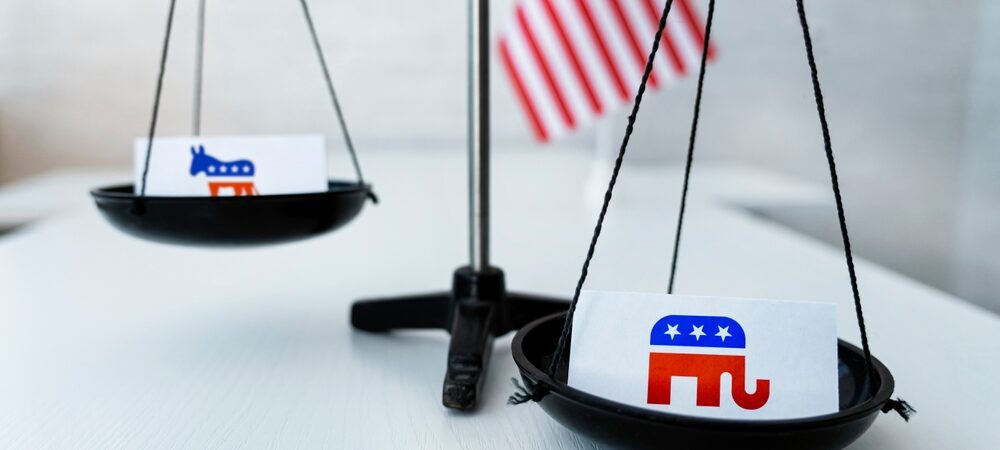The Biden-Harris administration and Donald Trump diverge sharply on priorities around import tariffs. Uncertainty around the election outcome, and the significant impact of US trade policy on global commerce and supply chains, underscore how important it is for companies to begin contingency planning around the 2024 US election.
A future Harris presidency would likely maintain much of the Biden administration’s trade policy, including import barriers on specific technologies and sectors, paired with preferential market access for geopolitical allies – a policy to counter Chinese global trade and supply chain dominance. Trump favors a broader policy of global universal tariffs to reduce goods trade deficits and address alleged unfair trade practices, which would dramatically impact global markets and disproportionately harm smaller countries.
Now is the time for global companies and investors to assess the risks and supply chain vulnerabilities that are possible for their businesses in each scenario and to determine the proactive measures necessary to mitigate their impact.
Trade under Harris
As a former US Senator and California Attorney General, Harris would enter the White House with limited trade policy experience. Harris’ agenda will be more clearly defined in the coming months, but as both vice president (2021-25) and senator (2017-21), she strongly supported strengthening multilateralism with US partners, supply chain resiliency (against China in particular), and placing environmental issues and protecting US workers at the forefront of trade policy. For these reasons, a Harris administration would likely continue many of Biden’s trade policies, which include maintaining the targeted high-tariff barriers in place against various countries to protect strategic US industries, targeting China with additional duties (in pursuit of reducing supply chain dependencies and preserving US technology leadership), and continually expanding export controls in a range of high-technology sectors.
Strong political support for protectionism and distaste for free trade with allies and adversaries alike began under the Trump administration but has permeated both political parties – a trend likely to continue in the coming years regardless of the 2024 election results.
However, the Biden-Harris administration diverged from Trump’s protectionist vision in that they were far more willing to offer preferential US market access to geopolitical allies in pursuit of other priorities, such as creating resilient supply chains.
This is most evident in the Inflation Reduction Act (IRA), which offers lucrative investment subsidies to countries with which the US has either free trade agreement (FTA) or a specially negotiated deal—such as that agreed with Japan and currently proposed for the UK and EU. The Biden-Harris administration has offered similar incentives to rebuild the US domestic chip manufacturing industry and has also worked to enlist countries to join his multi-pillar Indo-Pacific Economic Framework (IPEF).
All these policies have been designed to incentivize third countries – preferably close allies – to decrease trade and supply chain dependencies on China in exchange for the US. This multilateralist aspect of US trade policy would continue in a potential Harris administration.
Trade under Trump
Trump’s priorities are more singularly focused on reducing goods trade deficits and punishing countries for alleged unfair trade practices. During his campaign, he and his advisors have proposed high import barriers on both allies and adversaries of the US, with especially high import taxes – 60% – reserved for all Chinese imports.
It is important to note, however, that Trump does not have a clearly defined trade vision. His policymaking is highly transactional and has often depended on the nature of his personal relationship with the leader of the country in question.
Former US Director of the Office of Trade and Manufacturing Policy Peter Navarro and former US Trade Representative Robert Lighthizer – the architects of Trump’s first-term trade policy – are likely to return to a potential second Trump administration. Navarro favors reciprocal tariffs as a remedy to US trade deficits, while Lighthizer prefers an increasing universal tariff on all countries. In recent interviews Trump has promised to implement both policies.
Reciprocal tariffs – a policy to mirror import taxes that other countries have in place against the US – would benefit companies from countries that already have low import duties, such as New Zealand or Japan. Universal tariffs would disproportionately harm smaller and less wealthy countries that are not a threat to US economic security, as was the case with the 25% Section 232 tariffs on steel imports under Trump.
These universal tariffs would create significant market distortions. Exports from countries like Canada, for example, would suddenly be much more competitive relative to other non-FTA countries, like the EU or New Zealand (both close US allies). Such a scenario would have significant impacts on companies from countries that do not have an FTA with the US.
There is a legal debate to be had as to whether Trump could implement universal tariffs against free trade partners. While the president can do so in limited cases – such as on a specific import over national security grounds – tariffs across all imports would clearly violate the terms of a Free Trade Agreement.
The US president already has well-established authority to formulate and implement tariffs over national security grounds and on individual countries over unfair trade practices. However, Trump’s proposed reciprocal and universal tariffs are much more extreme in scope than anything proposed during his first term. Such policies, if implemented, would almost certainly be contested in court.
Regardless of any limits on Trump’s power, he will pursue a far more aggressive tariff policy than what has been seen under the Biden-Harris administration.
Scenario-based risk assessments: the best preparation
Whether it’s Trump or Harris in the White House in 2025, the most well-prepared organizations are conducting scenario-based risk assessments on the various outcomes of the election and running crisis simulations to ensure supply chain resilience and business continuity in all contingencies.
To read the full analysis as it was published on Control Risks, click here.

